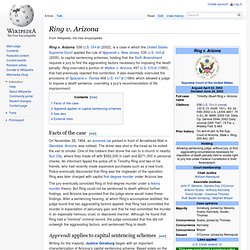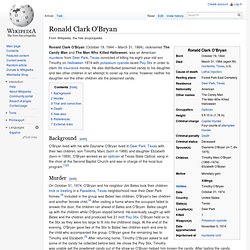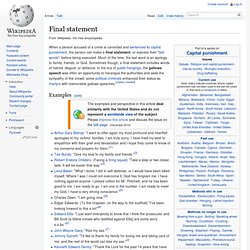

Ring v. Arizona. Ring v.

Arizona, 536 U.S. 584 (2002), is a case in which the United States Supreme Court applied the rule of Apprendi v. New Jersey, 530 U.S. 466 (2000), to capital sentencing schemes, holding that the Sixth Amendment requires a jury to find the aggravating factors necessary for imposing the death penalty. Ring overruled a portion of Walton v. Arizona, 497 U.S. 639 (1990), that had previously rejected this contention.
It also essentially overruled the provisions of Spaziano v. Ronald Clark O'Bryan. Ronald Clark O'Bryan (October 19, 1944 – March 31, 1984), nicknamed The Candy Man and The Man Who Killed Halloween, was an American murderer from Deer Park, Texas convicted of killing his eight-year-old son Timothy on Halloween 1974 with potassium cyanide-laced Pixy Stix in order to claim life insurance money.

He also distributed poisoned candy to his daughter and two other children in an attempt to cover up his crime; however neither his daughter nor the other children ate the poisoned candy. Background[edit] Pogo the Clown. Final statement. When a person accused of a crime is convicted and sentenced to capital punishment, the person can make a final statement, or express their "last words", before being executed.

Much of the time, the last word is an apology to family, friends, or God. Sometimes though, a final statement includes words of hatred, disgust, or defiance. In the era of public hangings, the gallows speech was often an opportunity to harangue the authorities and seek the sympathy of the crowd; some political criminals enhanced their status as martyrs with memorable gallows speeches. [citation needed]